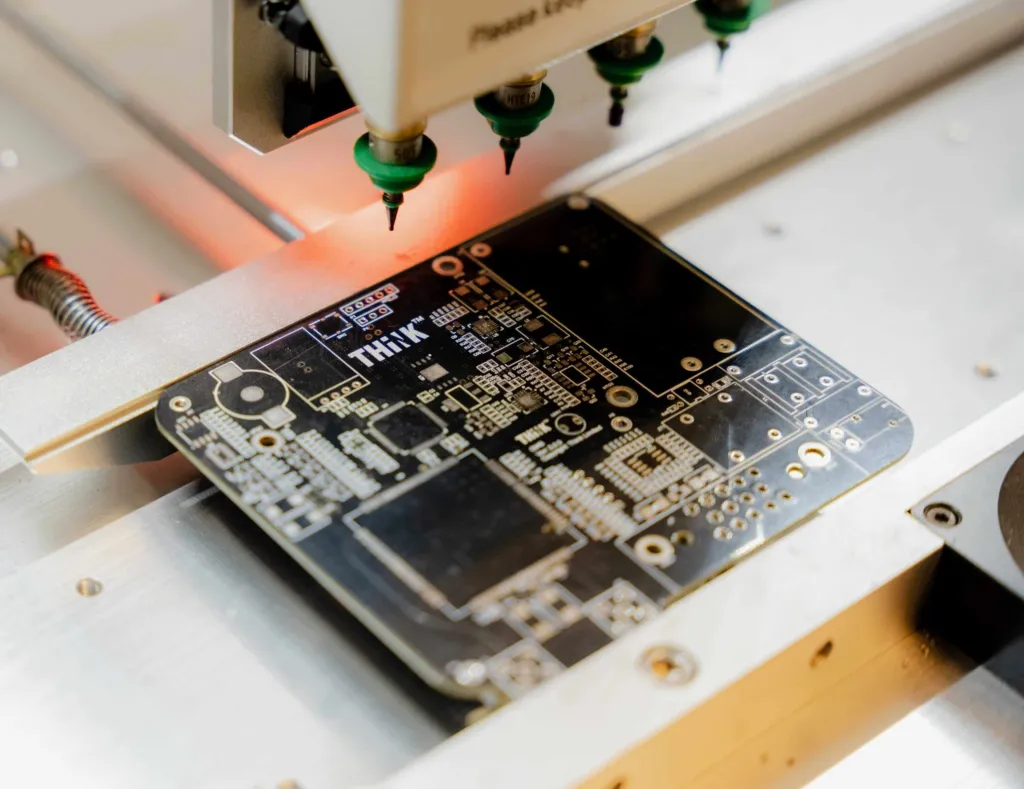What Are Embedded Systems?
An embedded system is mainly a mix of hardware and software. It is made to do a dedicated function. Unlike general-purpose computer systems such as laptops, embedded systems are built for specific tasks. This focus helps to make them smaller, use less power, and cost less. This is why they are great for many different uses.
You can find embedded systems in many places. They are in IoT devices that are showing up in our homes and in control systems for vehicles and machines. The growing need for smaller, stronger, and smarter devices, often with a small form factor, keeps pushing new ideas in embedded systems development.
Embedded System Design: Hardware Development
Developing the hardware for an embedded system includes several important steps. First, you need to truly understand the system requirements. Then, you can translate these needs into a detailed system design. Choosing the right hardware components is also key. You should think about factors like cost, power consumption, and availability.
Next, the process includes designing schematics and crafting the layout of the Printed Circuit Board (PCB). Testing is also very careful and important. The physical design must focus on making sure the system works well, manages heat properly, and meets safety and regulatory standards.

1. Requirements gathering and project development specification
The process of embedded system design starts with understanding what the system needs to do. This means gathering detailed requirements and thinking about both the functional parts, which are what the system should achieve, and the non-functional parts, like performance, size, and power limits. It is also important to define the expected user experience if needed, to make sure the final product meets user needs.
After getting the requirements, a development specification is created. This document acts like a plan that outlines the purpose, features, behavior, and limits of the embedded system. It helps guide the development process and makes sure everyone understands the goals.
Choosing the right hardware components is very important. The decision is mostly based on the requirements. It includes picking the correct microcontroller, memory, sensors, and other parts. Things like cost, availability, power consumption, and size are key things to think about in this choice.
2. Technical Proposal
Once we have the initial requirements, we begin to create a clear technical proposal. This document shows how the system will be built. It explains how different hardware components will work together and gives an overview of the software development approach.
The proposal includes choices about microcontrollers, the performance of system buses, and suitable development environments. It looks at possible problems, suggests how to manage risks, and gives a clear plan for the development process.
Additionally, the technical proposal often has estimated costs, timelines for development, and plans for resources. This information helps keep the client informed and makes sure everyone understands the project’s scope.
3. Schematics and PCB design and layout
The next step in the embedded system design process is to turn the ideas into a real electronic circuit. Here, skilled engineers create the schematics. These schematics show how each component connects and works together. They lay the groundwork for designing the Printed Circuit Board (PCB).
Designing the PCB is a key part of developing embedded systems. It affects how well the system works, its reliability, and its cost. The layout of the PCB determines where the components go, how electrical signals move, and how to handle heat. A good PCB layout is important for having the right electromagnetic compatibility, signal strength, and for making hardware components effectively.
During this design phase, following industry standards and best practices is very important. Engineers must think about power distribution, signal strength, and how easy it is to manufacture. This balance helps make sure the final PCB works reliably and is made efficiently.
4. Testing
Testing is a key part of the hardware development life cycle. It is important from the start with prototypes to the end with the final product. Careful testing is needed to make sure the embedded system works well and is reliable. This includes:
- Functional testing: Checking that the hardware does what it is supposed to do and meets the required standards.
- Performance testing: Looking at how fast the system is, how responsive it is, and how it uses resources under different conditions.
- Stress testing: Pushing the hardware to its limits, like changing temperatures, voltage, and mechanical pressure, to see how strong it is.
The testing process often needs special tools and setups to mimic real-world situations and find any design problems. Testing carefully helps find and fix issues early, which can save time and money later in the development process. By putting a lot of effort into testing during development, engineers can help make sure the final product is reliable, strong, and meets the high standards needed for embedded systems.

Challenges of Embedded System Development
Hardware design is important, but embedded software development gives those systems their functionality. Creating software that is both efficient and reliable is tough, especially with limited resources. Developers must choose the right programming language and ensure that the system responds in real-time.
They also need to manage issues like memory, power consumption, and security risks. This needs special skills and careful attention. The growing complexity of embedded systems, which often need to communicate with other devices or the internet, makes these challenges even bigger.
1. Hardware platform selection
Choosing the right hardware platform is a very important first step in embedded software development. This choice affects the software design, the programming languages used, and the overall abilities and limits of the system. Embedded systems usually work under tight resource constraints. They often have limited memory, low processing power, and very little energy available. It’s important to select a hardware platform that balances good capabilities with cost-effectiveness for the project’s success.
Also, developers need to think about the system integrity and reliability requirements. Things like temperature ranges, electromagnetic interference, and mechanical vibration can greatly affect how well the hardware works over time. These factors must be taken into account when choosing the platform.
2. Selecting a programming language and operating system
The choice of programming language and operating system (OS) is very important for any embedded software development project. The programming language affects how developers work with the hardware. This choice impacts how efficient the code is, how easy it is to read, and the overall performance of the system.
C and C++ are still popular languages because they give low-level access and efficiency. However, things are changing. Languages like Python and Rust are becoming popular too. They provide benefits, like improved developer productivity and better memory safety. Choosing the right language often means balancing execution speed, memory use, and the skills of the developers.
Additionally, selecting the right operating system is key, especially if needed. Real-time operating systems (RTOS) are often used in embedded systems that require precise timing and reliable behavior. As many IoT devices become more common, there is a growing need for operating systems. These need to handle network connections, data management, and security features well.
3. Software architecture design
Crafting a strong and clear software design is important for managing complexity. It also helps ensure the reliability of embedded software. This means breaking the system’s functions into smaller software components. Each of these components has a specific task or set of tasks.
A clear design helps reuse code, makes maintenance easier, and supports teamwork among developers. Using design patterns, like state machines and layered architecture, also helps to organize code and keep it manageable. If the embedded system includes a user interface, it is crucial to focus on user experience, speed, and how data is shown. Efficient data management, communication between different processes, and handling external events are all vital for making strong and reliable embedded software.
4. Coding
The coding phase in embedded software development is where design ideas become real instructions that the hardware can follow. To have the best system performance, it’s important to write efficient and reliable code. This helps use less resources and ensures the system works well.
But coding for embedded systems has its own challenges. Developers need to pay attention to memory limits, timing issues, and problems like buffer overflows that can happen when the code is running. Following coding standards and best practices is very important. This helps keep the code easy to read and maintain, and it lowers the chances of making mistakes.
During the development process, it’s important to test and debug the software carefully to find and fix any flaws. Tools like code reviews, static analysis, and unit testing frameworks can help keep the code quality high. This way, we can reduce the chances of bugs being missed.
5. Testing and debugging
Testing and fixing problems in embedded software are very important. This is because embedded systems work closely with hardware and often deal with safety issues. Even small problems in the software can lead to big issues.
Testing includes different methods. For example, unit testing checks single software parts, while system-level testing looks at the whole software system. Special tools, like JTAG debuggers and logic analyzers, help watch how the system works in real time and find the exact cause of problems.
Security testing is becoming more important, especially for systems connected to the internet or handling sensitive data. Embedded systems can face data breaches and unauthorized access. This makes it crucial to put strong security measures in place and carry out detailed checks for possible vulnerabilities.
Conclusion
In conclusion, designing an embedded system comes with different challenges. These include hardware development and software difficulties. Choosing the right hardware, programming style, and testing methods is very important for a successful design. Focusing on gathering the right requirements, making technical plans, and building a solid software structure is essential to deal with these challenges. By fixing common hardware problems and improving security measures, developers can create effective and trustworthy embedded systems. Ongoing learning and adapting to new technologies are important to remain competitive in this changing field.
FAQ’s
What are the Common Hardware Issues in Embedded System Design?
Common hardware problems include reducing power use for devices that need to last a long time, especially battery-powered modern home appliances. Good heat control, picking dependable hardware parts, and making sure the signals stay strong within the limits of the system design are also very important.
How to Choose the Right OS for Embedded Application?
Choosing the best operating system depends on what you need for your embedded system development project. You should think about real-time capabilities, memory use, networking and security features, and if it works with your hardware. The good news is there are many options available to suit your IoT device lifespans and embedded software needs.
How to Enhance the Security of Embedded Systems?
Improving the security of embedded systems is very important. It helps to stop data theft and protect intellectual property. The Palo Alto Networks’ IoT threat report points this out. We can reduce these risks by using secure boot processes, encrypting sensitive data, using secure communication methods, and doing regular security checks.